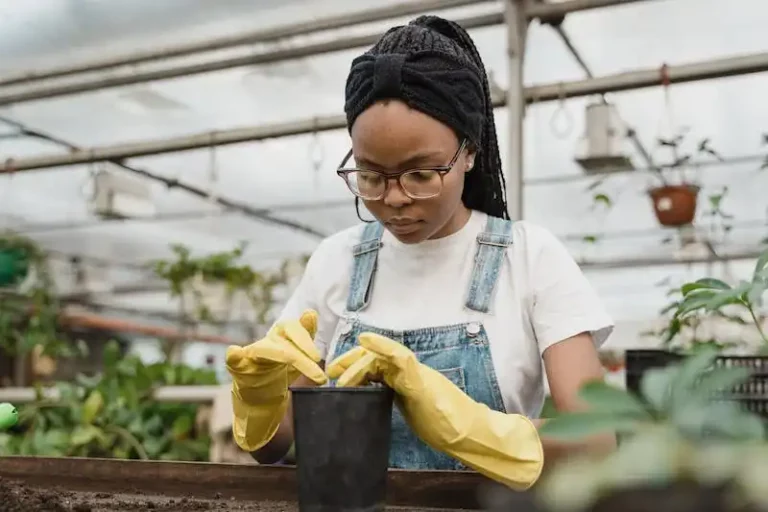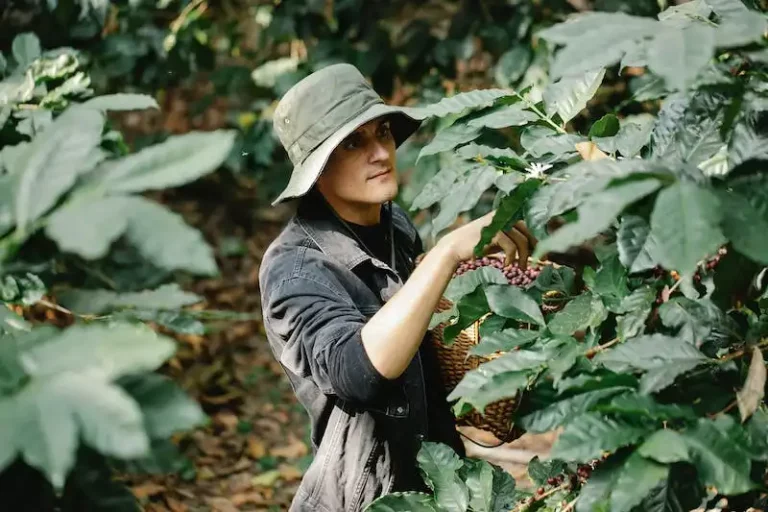Ginkgo biloba trees are unique and beautiful deciduous trees that have become popular in urban areas. They belong to the Ginkgoaceae family and are known for their distinctive fan-shaped leaves. Ginkgos have a long history and are often referred to as “living fossils” because they are the only surviving member of their plant family and have remained relatively unchanged for millions of years.
Ginkgo trees have many characteristics that make them desirable for planting in gardens and public spaces. They are quick to grow and are tolerant of different soil types, including sandy soils. Ginkgos have a higher survival rate than many other trees because they have deep roots, which allows them to withstand wind and temperature fluctuations.
One of the most popular reasons for planting ginkgos is the beautiful yellow color of their leaves in autumn. The leaves give a magnificent golden display before falling off the trees, creating a stunning strip of color. This is why ginkgos are often planted in parks and public spaces to give shade and beauty to the surroundings.
Ginkgo trees require minimal care and are low-maintenance. They do not need regular fertilizing, but it is recommended to fertilize them once or twice a year with a slow-release fertilizer to stimulate their growth. Ginkgos also have a unique characteristic – the female trees produce a stinky fruit that is not desirable for planting near public areas. Therefore, it is better to plant male cultivars, since they do not produce fruit.
In the autumn, when the ginkgos’ leaves turn yellow, many people are asked if they can pick them. It is generally not recommended to pick the leaves, as it can cause damage to the trees and also affects the trees’ survival. However, if you want to collect some leaves, it is better to wait until the leaves have fully fallen and collect them from the ground.
Ginkgo trees have a long history of use in traditional medicine. The leaves of the ginkgo tree have been used for their medicinal properties for centuries. They are believed to have a number of health benefits, including improving memory and brain function. Ginkgo leaf extract is also available in supplement form for those who want to benefit from its potential health benefits.
In conclusion, ginkgo cultivation and care involve planting and nurturing these unique and beautiful trees. Their quick growth, tolerance to different soils, and stunning autumn display make ginkgos a popular choice for gardens and public spaces. With minimal care and the right cultivar selection, ginkgo trees can thrive and provide shade, beauty, and even potential health benefits to the environment and its inhabitants.
General Care For Ginkgo Trees
Ginkgo trees are remarkable in their ability to adapt and thrive in various conditions. However, they still require some care to ensure their health and growth. Here are some general guidelines for taking care of your ginkgo tree.
Watering: Ginkgos have deep root systems, so they don’t need frequent watering. However, they do appreciate a good soak every now and then, especially during hot and dry periods. Water deeply, making sure the soil stays moist but not waterlogged.
Pruning: Ginkgos have a naturally beautiful shape, so pruning is mostly unnecessary. However, you may want to trim off any dead or damaged branches. Prune in early spring before new growth begins.
Fertilizing: Ginkgos are generally low-maintenance and don’t require much fertilization. Applying a slow-release organic fertilizer in early spring can help promote healthy growth.
Pest and disease control: Ginkgo trees are relatively pest and disease resistant, but they can still be susceptible to some issues. Watch out for fungal diseases, especially in humid climates. Remove any infected leaves or branches promptly.
Harvesting fruits: If your ginkgo tree produces fruits, you may choose to harvest them. However, be aware that the fruits emit a foul odor when they fall and rot. Wear gloves when picking them up, as the fleshy coating can cause skin irritation. Keep in mind that not all ginkgos bear fruit; it depends on the variety.
Sun and shade requirements: Ginkgos prefer full sun but can also tolerate partial shade. They can adapt to a wide range of conditions, including urban environments.
Soil and planting: Ginkgos are not too picky about soil, but they prefer well-draining soil. They can grow in sandy or loamy soil and tolerate alkaline or slightly acidic conditions. Ensure good drainage by adding organic matter and planting in a hole that is wide and deep enough to accommodate the roots.
Winter protection: Ginkgos are generally cold-hardy and can withstand freezing temperatures. However, if you live in an area with very harsh winters, you may want to provide some additional protection, such as wrapping the trunk with burlap.
Keeping ginkgos small: Ginkgo trees can grow quite large, reaching heights of up to 80 feet or more. If you prefer a smaller size, look for cultivars that are naturally smaller or consider bonsai or grafted varieties.
By following these general care guidelines, you can keep your ginkgo trees healthy and thriving for years to come. Enjoy their beautiful foliage and unique characteristics in your garden or landscape.
About Ginkgo Trees
Ginkgo trees, scientifically known as Ginkgo biloba, are one of the oldest living tree species on Earth. They are native to China, but can now be found in various parts of the world.
These trees can grow up to 100 feet in height and have unique fan-shaped leaves that turn a beautiful yellow color in the fall. The leaves are often used for medicinal purposes due to their potential health benefits.
Ginkgo trees are hardy and can withstand a variety of soil conditions, but they prefer well-drained, sandy soils. They can tolerate drought conditions once established, but they require regular watering in the first couple of years after planting.
When planting a Ginkgo tree, it is important to choose a location that receives full sun or partial shade. These trees can thrive in urban environments and are tolerant of air pollution.
Ginkgo trees produce fruits called “ginkgo nuts,” which are edible and have been used in traditional Chinese cuisine for centuries. However, the fruits have a strong odor and can cause allergic reactions in some people, so caution is advised when handling them.
In addition to their ornamental value and edible fruits, Ginkgo trees also have various uses. The leaves are often used in herbal medicine to stimulate blood flow and improve cognitive function. The wood of the tree is highly valued for its durability and is used for making furniture and other products.
Overall, Ginkgo trees are low-maintenance and can last for centuries. They are resistant to pests and diseases, and do not require frequent fertilizing or pruning. However, regular watering and proper care measures are important for their survival, especially in their early years.
If you are interested in growing a Ginkgo tree, it is recommended to choose a cultivar that is suited to your specific climate and soil conditions. The USDA Plant Hardiness Zone map can help you determine which Ginkgo cultivars are best suited for your area.
It is worth noting that Ginkgo trees are dioecious, meaning there are separate male and female trees. Only female trees produce fruits, so if you want to have ginkgo nuts, make sure to plant a female tree or a cultivar that is known for producing fruits.
In conclusion, Ginkgo trees are beautiful and unique trees with a rich history and many uses. Whether you plant them for their ornamental value, their medicinal properties, or their edible fruits, they are sure to add beauty and interest to your garden or landscape.
Watering Ginkgo Trees
Ginkgo trees are beautiful deciduous trees that are well-suited for urban gardens. They are known for their unique fan-shaped foliage and fruitless forms. If you have a ginkgo in your garden, you’re in for a treat.
Ginkgo trees are mostly found in their Biloba form and take about five years to fully establish. They can tolerate a variety of soil types but prefer well-draining soil. Therefore, it’s important to plant your ginkgo in soil that is loose and not compacted.
When it comes to watering ginkgo trees, it’s important to provide just the right amount of moisture. Ginkgo trees have deep and broad root systems, so they don’t require frequent watering. In fact, it’s better to let the soil dry out slightly between watering sessions.
During the first year after planting, water your ginkgo tree once or twice a week. This will help establish its root system. After that, you can reduce the frequency of watering to once every two weeks or even once a month, depending on the climate and rainfall in your area.
It’s important to water your ginkgo tree deeply when you do water it. This means allowing the water to penetrate the soil and reach the roots. You can achieve this by using a soaker hose or by watering slowly and lightly, allowing the water to soak into the soil.
In general, ginkgo trees are low-maintenance and don’t require a lot of fertilization. However, if you do decide to fertilize, it’s best to do so in the spring or early summer. Use a slow-release fertilizer and follow the instructions on the package.
It’s important to wear gloves when working with ginkgo trees, as the fruits can be smelly when they fall to the ground. Most ginkgo trees are fruitless, but if you have a female ginkgo tree, you may want to consider picking up the fallen fruits to avoid any potential odor issues.
In terms of pollination, ginkgo trees are mostly self-fertilizing, meaning they don’t need another tree for pollination. However, having a male grafted tree nearby can result in better fruit production.
In summary, watering ginkgo trees requires providing them with the right amount of moisture. They prefer well-draining soil and don’t require frequent watering. It’s important to water deeply, but allow the soil to dry out slightly between watering sessions. Fertilizing should be done sparingly, if at all. And remember to wear gloves when working with ginkgo trees to avoid any unpleasant smells from the fruits.
Soil for Ginkgo Trees
Ginkgo trees, also known as the “living fossil,” have a long history of growing in various soils. These deciduous trees are well suited to a variety of soil types, but they prefer well-draining soils.
When picking a soil for your Ginkgo tree, it is important to keep in mind their reactions to certain soil conditions. Ginkgo trees thrive in sandy soils with good drainage. Sandy soils allow water to flow through easily, preventing water from pooling around the roots and causing root rot.
Ginkgo trees can also be grown in loamy or clayey soils, but be cautious of soil compaction. Compacted soils can hinder root growth and lead to the decline of the tree. To prevent compaction, avoid walking or driving over the root zone of the Ginkgo tree.
The pH of the soil is another important factor to consider when choosing the soil for your Ginkgo tree. These trees tolerate a wide range of soil pH levels, but they prefer slightly acidic to neutral soils with a pH between 5.0 and 7.0.
If the soil in your garden is heavy clay with poor drainage, you may need to improve it before planting a Ginkgo tree. One way to improve the soil is by adding organic matter such as compost or well-rotted manure. Organic matter helps to improve soil structure, drainage, and nutrient content.
In urban environments where soil may be compacted and lacking in organic matter, it is important to properly prepare the planting site. One option is to create raised beds or planting mounds filled with well-draining soil mixtures.
Additionally, it is crucial to keep an eye on the moisture levels of the soil. Ginkgo trees prefer well-draining soils, so be cautious of overwatering. During the first few years after planting, water regularly to establish the tree’s root system. Once established, Ginkgo trees are tolerant of drought and can withstand dry periods.
In general, Ginkgo trees are not heavy feeders, but they may benefit from occasional fertilizing. Fertilize your Ginkgo tree in the early spring with a balanced slow-release fertilizer. This will provide the necessary nutrients for optimal growth.
It is important to note that Ginkgo trees have separate male and female cultivars. The male cultivars are often preferred due to the fact that female trees produce smelly fruits. If you want to avoid the mess and odor of the fruits, choose a male cultivar.
In depth research and planning will help you better understand the soil requirements of Ginkgo trees. By choosing the right soil and providing proper care, you can enjoy the beauty and unique characteristics of these ancient trees in your garden.


